The triple threats of Lesvos: could it be the ultimate Greek island?
Every island has at least one claim to fame. Lesvos boasts a deep entanglement with no less than three: Aesop's Fables, ouzo, and the origins of lesbianism.
Greeks.
Science, philosophy, mathematics, medicine, democracy, geometry, architecture, mythology, comedy, tragedy, and pornography.
Oh, and salad.
Clever.
Their islands have been revealing their mysteries and ingenuities to us one by one. An island of singing donkeys, another boasting the magical Mastika tree, a third the birthplace of Hippocrates, and ground zero for modern medicine.
Just one fun fact, one quirk, is usually enough for the islanders to weave together a narrative and put themselves on the map.
Lesvos, however, hits different.

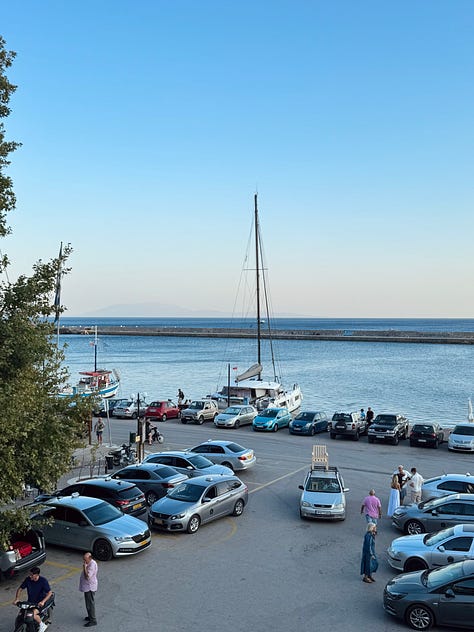

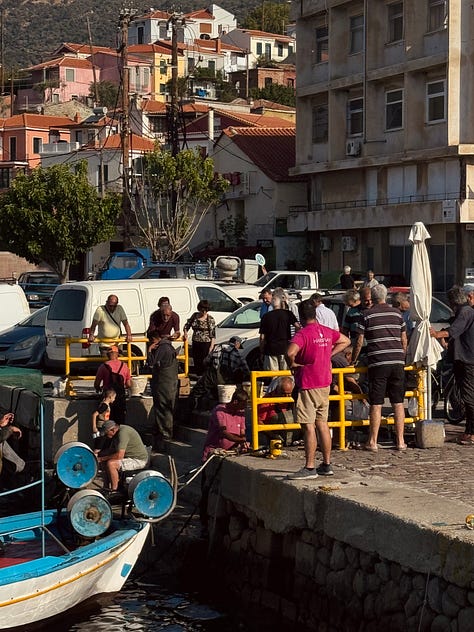
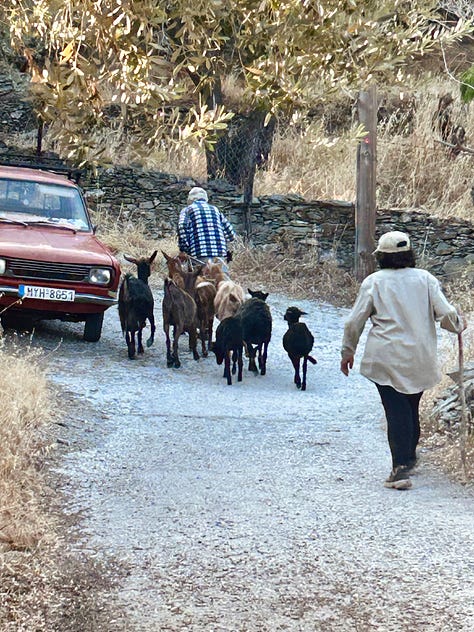
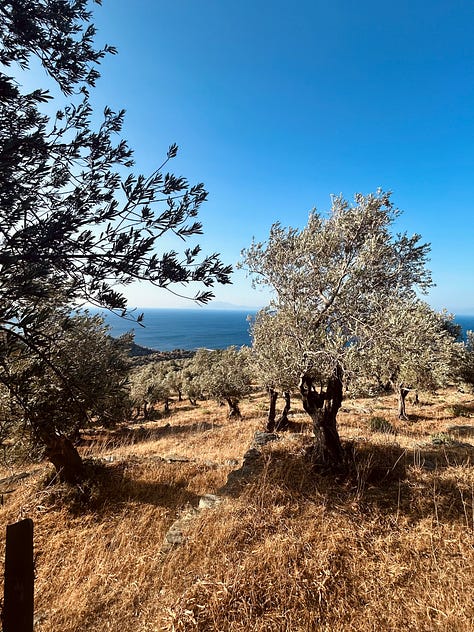

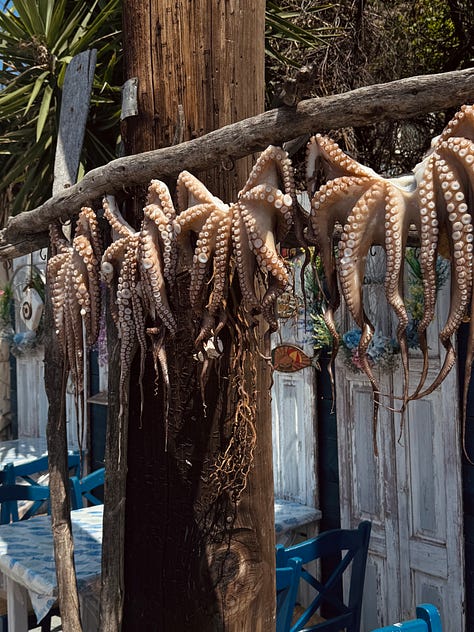
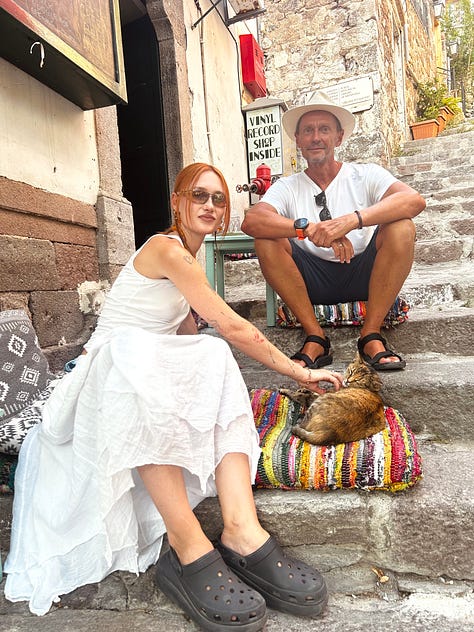
Top - Perfect sailing to Lesvos (see background) 20 miles north. Mosaic L-R - Miki came back to spend another week with us. Miki and Jo hiking to the shops for oranges and fresh bread. Front row seat on Plomari town quay. Greek Orthodox priest banters with mates. Early morning and the fishing boats are back. Jo and I herding goats, lol. Olive trees cover 25% of the island. Plomari town, mid-morning. Sun-dried squid. Miki and me, with Frankie, a local.
The third largest Greek island in the Aegean, after Crete and Evia, Lesvos is big enough to have distinct climates, flora, and landscapes at either end. The east is mountainous, green, and lush. The west is windswept and lunaresque.
A tale of two halves, split personalities, and startling contrasts.
Although, that’s not what makes Lesvos remarkable.
It’s the outrageous concentration of gentle artists and kind sages that left their marks here and sent ripples around the ancient world.
Then the modern world.
All the way to Dubbo.
All the way to now.
It might just be the cleverest, most creative island of them all.
Aesop the fabulist
Aesop (c. 620 - c. 570 BC) was a slave and a storyteller thought to have written many of his fables on Lesvos1. Who can forget, “The Boy Who Cried Wolf”, “The Tortoise and the Hare”, or “The Goose that Laid the Golden Eggs”?
Not me.
Aesop’s Fables were a staple of my education at South Dubbo Primary School and became the four corners of my moral compass.
Don’t tell porkies.
No one likes a smarty-pants (like the rabbit).
Be nice to geese (anything that lays eggs really).
Avoid the foie gras.
Ol’ Aesop was prolific, too. He’s credited with 584 fables altogether, although modern scholars acknowledge that he probably did not write them all. Still, he delivered a mountain of morally rich fiction that has stood the test of time.
They’re tight, loaded with drama, and pack a punch.
Exhibit 1 - The Boy Who Cried Wolf.
A shepherd boy makes a fuss about nothing. He cries out, “Wolf!” Repeatedly.
When a wolf does appear, and the boy cries out, no one believes him.
The wolf eats the sheep.
That’s bad.
And the boy.
Worse.
Moral: Working outdoors can be dangerous.
Exhibit 2 - The Goose That Laid The Golden Eggs
A cottager and his wife have a goose that lays a golden egg every day.
They assume the goose is full of gold and want it all at once.
They kill the goose.
It’s full of gooseyness.
They go broke.
Moral: Eggs are good for you.
Exhibit 3 - The Tortoise and the Hare.
A hare pokes fun at a tortoise.
The tortoise challenges him to a race.
The hare races ahead, then stops for a nap.
When the hare wakes up, the tortoise has already won.
Moral: Having too much sex makes you tired.
To his great credit, and to avoid any misinterpretations, Aesop did a very good job spelling out the actual lessons in his fables.
One thousand years after his death, Gutenberg’s printing press enabled the publishing industry to be created.
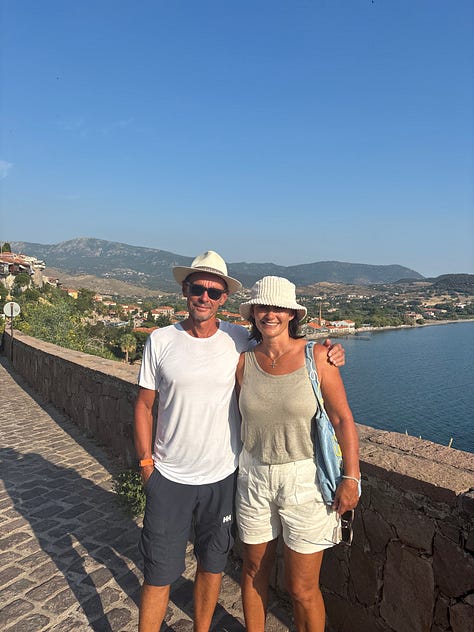

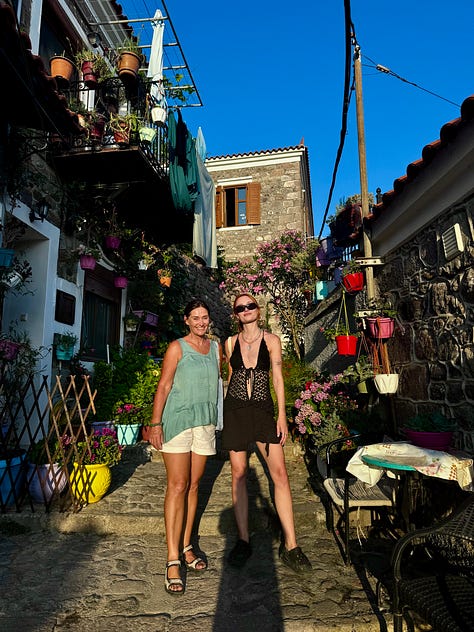
L-R - Pretty sure Aesop was here in Mythmna (Molyvos), Lesvos. The outboard motor on our dinghy was made by Honda, 2500 years after Aesop. The decal on the accelerator handle features a tortoise and a hare. Jo and Miki on steps like the ones Aesop must have used to climb up and down.
So powerful, pervasive, and enduring were Aesop’s stories that Aesop’s Fables were the first books to ever be printed in many languages.
His fables gave birth to their own superlative - fabulous.
How fabulous it is to be sailing and walking around his old haunts.
Sappho - the tenth muse and first lesbian.
Sappho was born in Lesvos around 612 BC. She grew to become widely regarded as one of the great lyrical poets of ancient Greece.
Lyrical poetry is written to be sung, accompanied by music, usually played on an instrument known as a kithara, a seven-stringed lyre (hence "lyric").
Her work focused on expressing personal emotions and feelings, often longing for the love of women.
Godlike the man who
sits at her side, who
watches and catches
that laughter
which (softly) tears me
to tatters: nothing is
left of me, each time
I see her,
… tongue numbed; arms, legs
melting, on fire; drum
drumming in ears; headlights
gone black.
For almost 1,000 years Sappho was revered like a goddess.
Plato called her the ‘tenth muse’. Others called her the ‘poetess’.
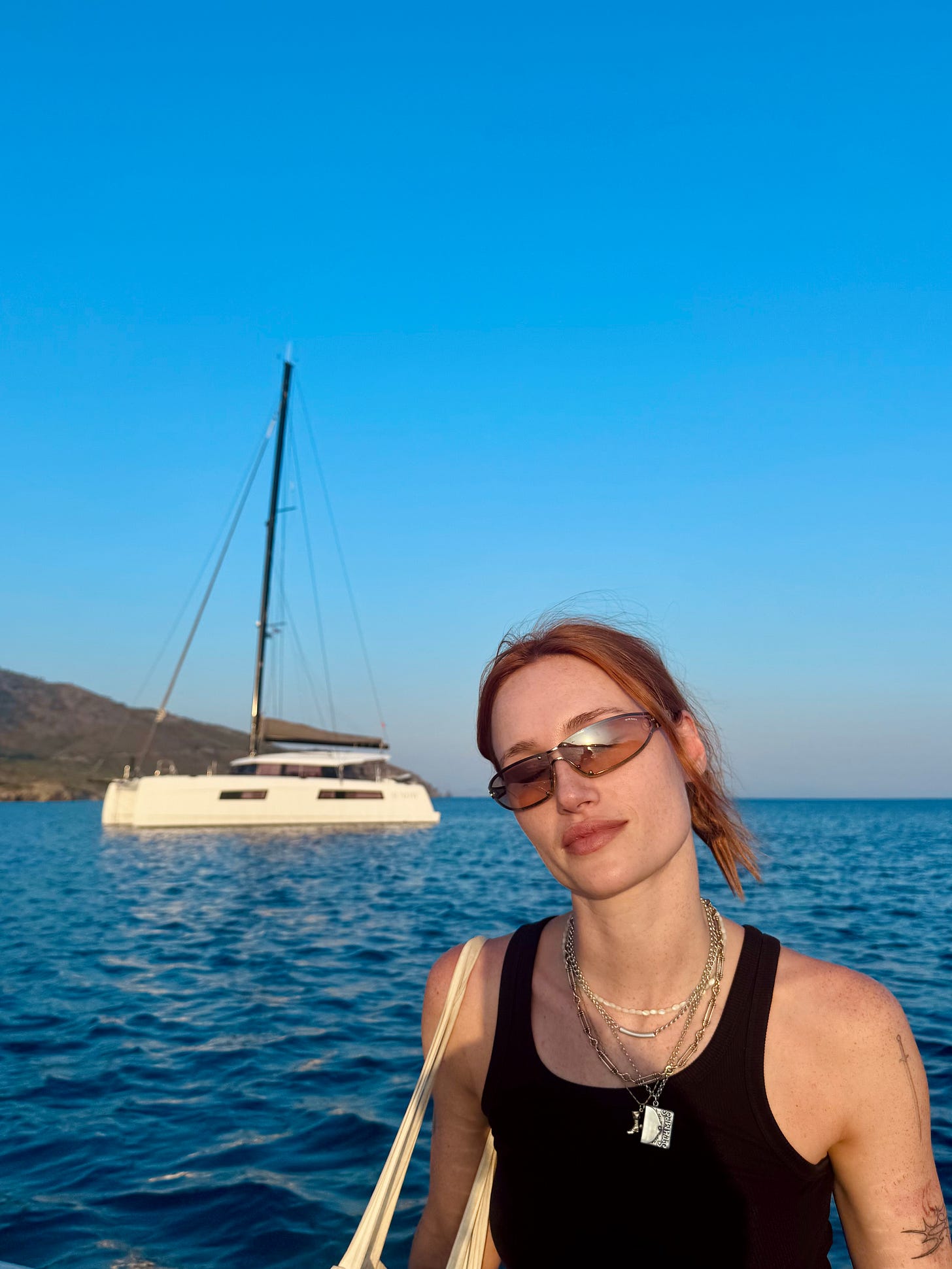
Beyond her poetry, Sappho is well known as a symbol of love and erotic desire between women.
The English words sapphic and lesbian derive from her name and that of her home island, respectively.
In Greek, the “v” of Lesvos is pronounced as “b”, hence Lesbos.
Before the mid-19th century, the word lesbian referred to anything to do with Lesbos. All local people, animals, plants, and produce were, by provenance, “Lesbian”.
It was Sappho of Lesbos who gave the term lesbian the connotation of erotic desire between women, albeit centuries later.
A woman whose body of artistic work resonated so deeply long after her lifetime that she rebranded an entire island and changed the meaning of the word lesbian around the world.
No small thing.
Sappho died a true poet’s death leaping from the cliffs on the southwest corner of Levkas when rejected by her lover, Phaon.
Her work speaks unambiguously for her love of women. We’ll never know about Sappho’s true sexual orientation and proclivities but, surprisingly, Phaon was a man.
An ugly old boatman transformed by an ointment given to him by Aphrodite as payment for a passage from the island.
Crusty Phaon had tried all the usual supplements, injectables, cremes, and tinctures - creatine, salmon sperm, botox - to smarten himself up. He was even flirting with the idea of veneers and a face-lift in nearby Asia Minor (now Türkiye).
But with just a dab of Aphrodite’s potion, Phaon became a scrumptious young stud muffin.
And Sappho fell for him, metaphorically and literally.2
But the last words are hers.
Someone will remember us
I say
Even in another time”
And they do.
For the love of ouzo.
To get themselves closer to god a group of monks started tinkering with tsipouro on Mount Athos to the northwest of Lesvos in the 14th century. One version of it was flavored with anise.
This version became ouzo and the town of Plomari on Lesvos, 100 miles to the southeast, took it to heart.
Over the centuries techniques and recipes have been refined and perfected. One of the oldest, most recognised, and renowned ouzos in all of Greece is called Varvayanis, in Greek ~ BAPBATIANNH. (Remember the “v” is a “b” thing?).
The Anise that gives ouzo its distinctive licorice taste is grown on the family’s estate, along with a secret blend of aromatic herbs used in the family’s recipes.
When the Anise reaches maturity, it is harvested, bound in small bouquets, and left to dry in the shadows, where secrets like to dwell.
Not too dry though, it’s important to preserve the green colour.
The family’s ouzo has been crafted in Plomari for generations where the Varvayanis’s family have acreage, a distillery, an ouzo museum, and a fancy shop near the quay.
Purely by chance, we’d bought a bottle of Varvayanis ouzo in Paxos, on the Ionian side of Greece, last September. I asked the merchant in Paxos for his finest ouzo and he pointed to the BAPBATIANNH. Eight months later, there we were in Plomari where it all began.
Time for another bottle and to pour an ouzo over ice to celebrate the artists and sages of Lesvos whose work resonates to this day.
Beyond Aesop and Sappho, the names linked to Lesvos are legendary. Terpander the father of Greek music; the philosophers Epicurus and Aristotle. Pitticus, who united the cities of the island and whose wise rule won him a place among the Seven Sages of Greece.
There are more, of course, including the current artisans making Lesbian Donkey Olive Oil (so many questions). Together they make Lesvos, quite possibly, the most creatively charged and influential island of them all.
Here’s to Aesop, Sappho, and a great many others.
Ee-gia mas (Yaa-mas).
Cheers.
Smooth sailing until next time,
Craig and Jo xxx
Some scholars believe Aesop resided in Samos, others say it was Sardis, or Lydia. My sources - the web and the Greek Waters Pilot book - point to Lesvos. Let’s run with that.
The line between facts, history, mythology, and fantasy is often blurry in Greece. We’ll never know the truth, but we can choose to go along with the “truthiness” instead.






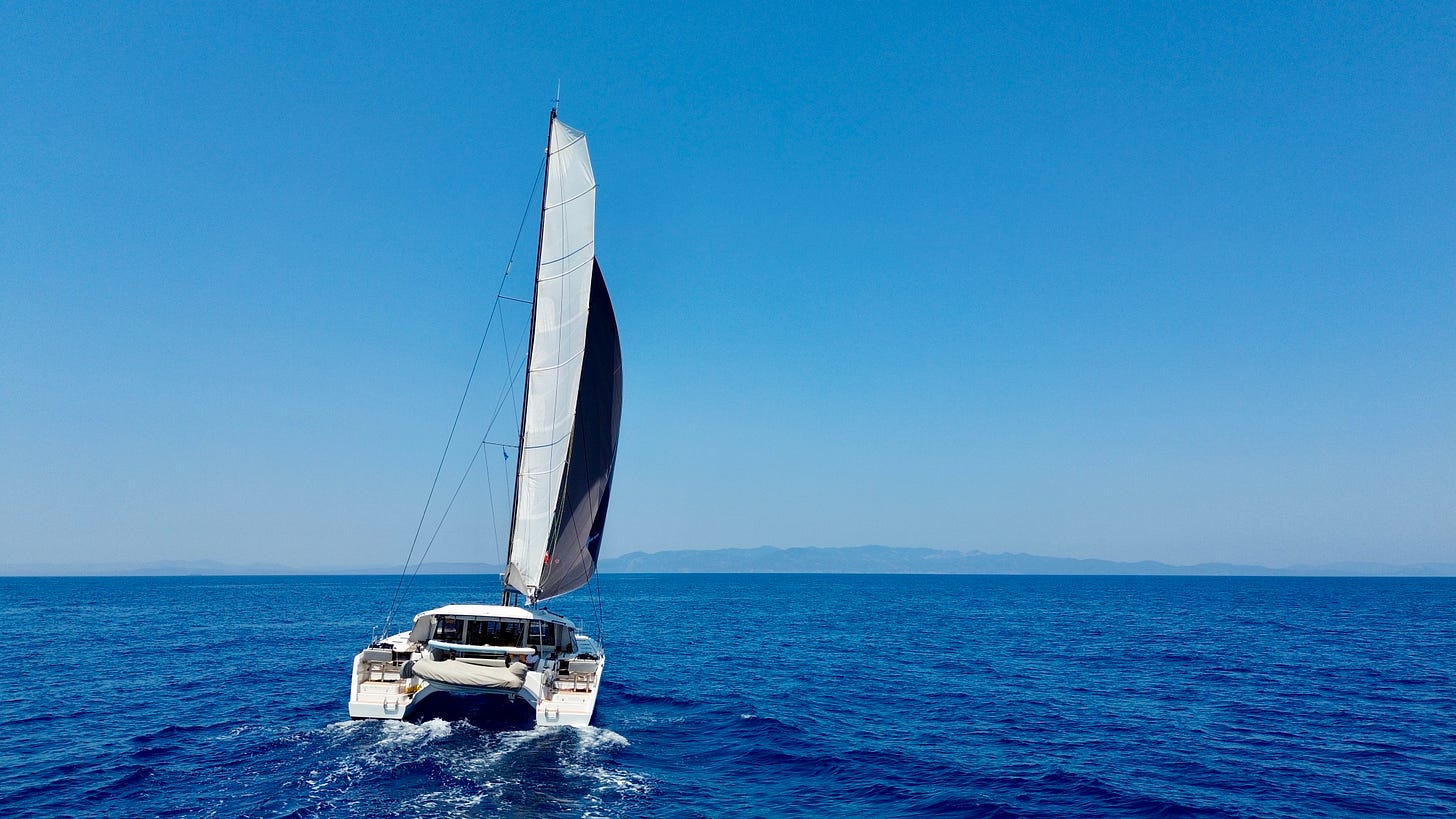


A wonderful read this breakfast! thankyou for the smiles...happy sailing ! :)